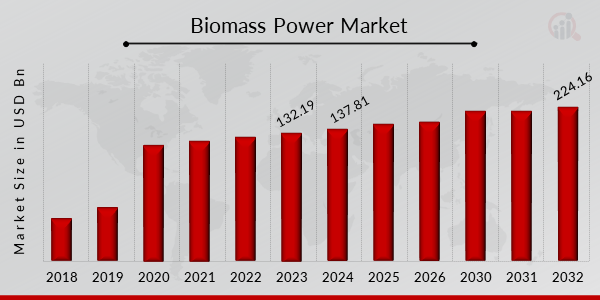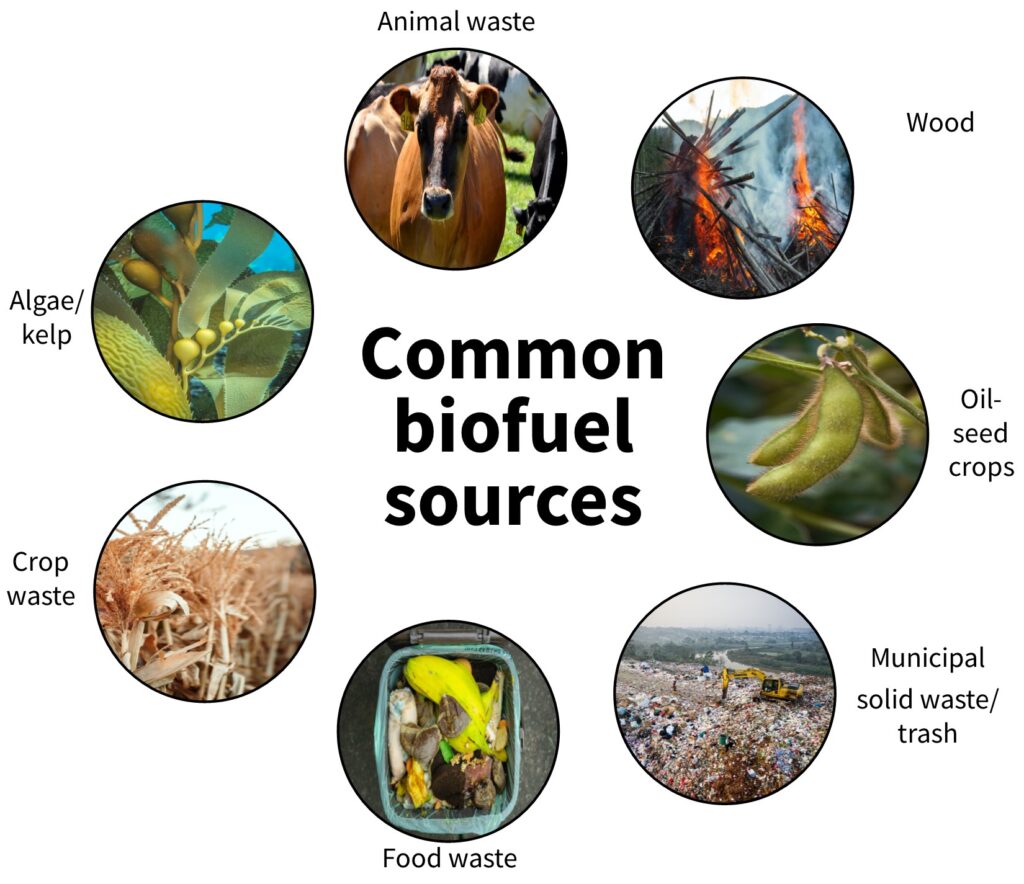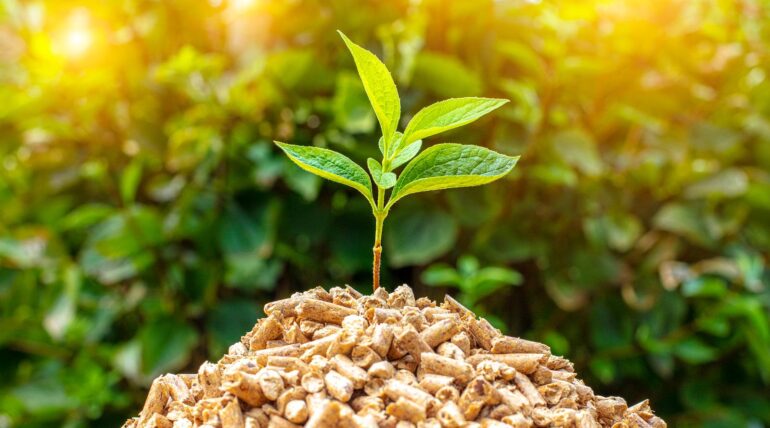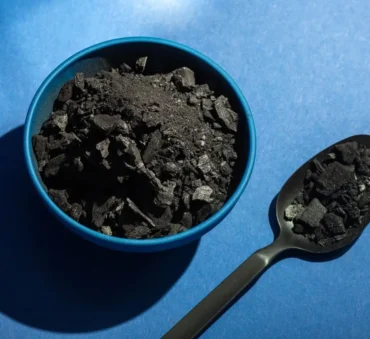What if there were a way to generate renewable energy while cutting down on landfill waste?
That’s exactly what biomass does. As a sustainable, lower-carbon alternative to fossil fuels, biomass is gaining increasing attention, with the global biomass power market projected to reach USD 203.61 billion by 2030.

However, it’s important to note that there are different types of biomass, each of which plays a unique role in achieving sustainability goals. Understanding the differences between materials like wood, organic waste, and liquid waste is key to recognizing their potential for renewable energy.
Keep reading to discover the types of biomass energy, its advantages and disadvantages, and more.
Key Takeaways
- Energy crops are high-yield plants grown mainly for energy production, offering a low-cost, low-maintenance biomass source for renewable energy.
- Woody biomass is a renewable, non-food resource that doesn’t compete with agriculture and provides environmental benefits by using less energy than non-wood alternatives.
- Agricultural biomass is a sustainable use of farm outputs and residues, repurposed into energy and biofuel to reduce waste, support rural economies, cut disposal costs, and generate new revenue streams.
- Municipal solid waste is everyday garbage from homes, businesses, and communities that can be converted into biomass energy, reducing fossil fuel dependence, cutting greenhouse gas emissions, and addressing waste disposal challenges.
What is Biomass & Why It Matters
Biomass is renewable organic material that comes from plants and animals. A major advantage of biomass energy is that it reduces reliance on fossil fuels, preventing the release of carbon into the atmosphere from nonrenewable resources.
Its ability to be converted into energy also makes it a sustainable solution for waste disposal in the food industry, helping reduce the environmental impact of waste.
History of Biomass
Bioenergy has been utilized for cooking, heating, and lighting since the dawn of humans. The use of fire is the first form of biomass, demonstrating how organic materials have long served as a vital source of energy.
For thousands of years, biomass energy in the form of wood fueled the world’s economy until it was gradually replaced by more easily extractable resources such as coal, oil, gas, and uranium.
In fact, biomass was the largest source of total annual U.S. energy consumption until the mid-1800s. Fast forward to 2023, biomass only accounted for about 5% of the nation’s total primary energy use.
Here’s how U.S. biomass energy was used across sectors in 2023:
- Industrial: 45%
- Transportation: 36%
- Residential: 9%
- Electric power: 7%
- Commercial: 4%
While the use of biomass decreased over time, it continues to serve as an important renewable resource, with applications that typically include heating, electricity generation, and transportation fuels.
Today, biomass is making a comeback due to its role in meeting contemporary energy demands. As more governments and companies recognize the benefits of biomass, we expect this industry to continue growing.
How Does Biomass Become Energy?

The next big question is: how does biomass turn into an energy source?
There are multiple methods of converting food waste into energy, including:
- Anaerobic digestion: Anaerobic digestion is a process in which bacteria break down organic matter in the absence of oxygen. This process produces biogas, an environmentally friendly, renewable energy source.
- Pyrolysis: Pyrolysis is the heating of an organic material, such as biomass, in the absence of oxygen. This process produces fuels such as charcoal, bio-oil, renewable diesel, methane, and hydrogen.
- Gasification: In the gasification process, biomass is exposed to high temperatures with controlled oxygen, breaking it down into syngas that can be used for heat, power, or fuel production.
7 Types of Biomass
What are the different sources of biomass?
From energy crops to liquid waste, here are the different biomass types you should be aware of:
Energy Crops
Energy crops are crops that are cultivated primarily for the purpose of energy production, characterized by their high yield of dry material per unit of land. An advantage of this kind of biomass is that they are typically low-cost, require minimal maintenance, and are cultivated for biofuel production.
Energy crops are generally classified into two types:
- Herbaceous: Perennial grasses, such as switchgrass, silver grass, bluestem grass, elephant grass, and wheatgrass.
- Woody: Short rotation woody crops such as cottonwood, silver maple, black locust, and poplar.
Since these crops have high energy potential, they help generate renewable energy and reduce over-dependence on conventional sources. However, energy crops may compete with food production and can lead to deforestation and destruction of natural habitats, meaning their large-scale use must be carefully managed.
Woody Biomass: Crops, Forestry, and Processing Residues
Woody biomass refers to renewable organic material from trees and shrubs. This includes:
- Crops: Crops like willow, poplar, eucalyptus, and silver maple.
- Forestry: Residues from forest operations such as branches, bark, leaves, and thinnings left after logging.
- Processing residues: Byproducts from wood industries, including sawdust, wood chips, and black liquor from paper mills.
Advantages of woody biomass include its renewability, its status as a non-food organic material that does not compete with agricultural production, and its environmental benefits, as it requires less energy to manufacture products compared to non-wood alternatives.
On the other hand, the challenges of woody biomass include its limited availability, high cost, and low energy density, among others.
Fun fact: Wood and wood-derived fuels provide about 2% of the total energy consumed each year in the United States, yet they make up roughly 27% of the nation’s renewable energy use.
Agricultural Crops and Waste
Agricultural biomass represents all types of crops—such as lignocellulosic, oil crops, and sugar crops—grown on agricultural land, regardless of their chemical makeup. This approach acts as a sustainable use of agricultural waste, as it makes productive use of agricultural outputs and residues, supports rural economies, and provides a renewable alternative to conventional energy sources.
In addition to being repurposed into biofuel and energy, using agricultural waste as a form of biomass allows companies to reduce waste disposal costs and create new revenue streams.
While biogas production from food waste has many environmental benefits, it must be carefully managed to prevent issues such as contamination or inefficient resource use.
Municipal Solid Waste
Municipal solid waste (MSW) refers to everyday garbage generated by households, businesses, institutions, and community activities. This type of biomass includes materials such as paper, cardboard, food waste, grass clippings, leaves, wood, and leather products.
In 2018, about 12% of the 292 million tons of MSW produced in the U.S. was processed in waste-to-energy plants.
One study even states that the extraction of energy from MSW is the best option to discard solid waste with minimum greenhouse gas emissions, as it reduces fossil fuel dependence and addresses waste disposal challenges.
However, environmental consequences and health risks are related to improper MSW management, underscoring the need for professional handling, advanced technologies, and well-structured systems to ensure safe and sustainable waste practices.
Animal Manure
Did you know that animal manure can be used as biomass?
Yep, you heard that right. ScienceDirect gives us valuable insight into this, stating that:
“Animal manure has a clear potential to produce organic acids, biomaterials, biofuels, and bioenergy. So, bioprocesses or biorefineries using this biomass as a feedstock may be promising in the near future in the context of the bio-economy, helping to increase the production of renewable energy, promoting inclusive and sustainable industrialization, fostering innovation that adds value to the main livestock activities that generate manure, and guaranteeing sustainable consumption and production modalities that allow mitigating the effects caused by the current treatment of manure.”
Like the other types of biomass, there are challenges associated with animal manure, particularly the difficulties of storing and transporting it safely and efficiently, which require expert guidance to manage properly.
Biogas
Biogas is not biomass itself but a renewable fuel produced from it. Through anaerobic digestion, organic materials such as agricultural residues, food scraps, sewage wastewater, and plant material are broken down by microorganisms, releasing a methane-rich gas.
This gas can be used for cooking, heating, and electricity generation, or upgraded into biomethane as a cleaner substitute for natural gas.
As a biomass-derived fuel, biogas transforms waste into energy and reduces methane emissions that would otherwise escape into the atmosphere.
Liquid Waste
Liquid waste, such as industrial effluents and wastewater from households or agriculture, is another significant biomass resource. Rich in organic content, these waste streams can undergo anaerobic digestion or other treatment processes to produce biogas, bio-oil, or other renewable fuels.
For instance, companies can make biomethane from dairy waste. This approach provides a sustainable, eco-friendly energy source that can be applied across multiple areas, including transportation, electricity generation, and heating and cooling, among others.
The Advantages and Disadvantages of Biomass
Understanding the advantages and disadvantages of biomass provides a more well-rounded view of this energy source.
Keep reading to explore its key pros and cons.
Pros
The pros of biomass include:
Renewable Energy Source
Biomass is derived from organic materials, making it a renewable energy source that has long-lasting potential to support sustainable energy production. This is a huge advantage over fossil fuels like coal and oil, which are nonrenewable resources that take millions of years to form and release significant greenhouse gases when burned.
Potential for Carbon Neutrality
Biomass has the potential to be carbon neutral because the carbon dioxide released during its use can be offset by the carbon absorbed during its lifecycle. When managed sustainably, this cycle helps reduce net greenhouse gas emissions compared to fossil fuels.
Biomass Helps Reduce Waste
Using waste as biomass helps companies increase landfill diversion, which has both economic and environmental benefits. By improving organic waste management, you can decrease landfill fees while reducing your environmental impact—a win-win that supports sustainability and creates new opportunities for renewable energy production.
Abundant Source
Biomass comes from everyday materials like crops, forestry residues, and organic waste, making it a widely available renewable resource. This availability provides a consistent feedstock for energy production, which can help reduce reliance on fossil fuels over time.
Cons
The cons of biomass include:
Land Use and Deforestation
One drawback of biomass is its demand for land. Growing crops specifically for bioenergy can compete with food production and increase pressure on land. In some cases, forests may be cleared to make space for these crops, leading to deforestation, habitat loss, and higher greenhouse gas emissions.
Costs
Biomass energy systems can involve high upfront expenses for technology, infrastructure, and transportation. Partnering with a waste management provider like Shapiro helps offset expenses by streamlining collection, processing, and disposal, making biomass projects more cost-effective.
Air Pollution
Burning biomass for energy contributes significantly to air pollution. As stated by ScienceDirect, “Burning of biomass fuels comprises to nearly 10% of the total energy from anthropogenic combustion processes; however, as the burning is usually incomplete, this process yields products of incomplete combustion posing consequently significant impacts on air quality, human health, and climate change.”
To address this concern, effective waste management strategies, such as converting organic waste into biogas, can help lower emissions and make biomass use more sustainable.
Resource Intensive & Inefficient
Producing and delivering biomass energy can place heavy demands on resources, often requiring significant water use, chemical inputs, and energy throughout the process. That said, advances in technology and more efficient waste-to-energy systems can help lower these requirements and improve sustainability.
Emerging Trends & The Future of Biomass
Biomass is increasingly seen as a driver of the circular economy, with innovations like bioplastics, carbon-negative biochar, and biomass-based materials such as hemp showing how waste can be repurposed into carbon-sequestering products.
A review on biomass and circular economy says,
“Biomass’s circular role is needed in realizing a circular economy, and so we propose new economic and policy concepts. A transformative model towards the combination of bioenergy and circular economy business models will produce many revolution-embracing innovative jobs or start-ups.” It also stresses that researchers must consider circularity, optimization, and energy justice as policies evolve.
As these applications expand, attention is also turning to the global trade of biomass.
Currently, biomass trade is mostly regional but IEA Bioenergy highlights future opportunities: “The possibilities for exporting biomass-derived commodities to the world’s energy markets can provide a stable and reliable demand for rural regions in many developing countries, thus creating an important incentive and market access that is much needed. For many rural communities in developing countries such a situation would offer good opportunities for socio-economic development.”
To make this potential a reality, proper standardization and certification will be essential.
Increasingly, biomass is also being integrated into circular and regenerative design, particularly in construction and waste repurposing, where it helps support climate resilience while reducing environmental impacts.
Conclusion
From energy crops to agricultural waste and animal manure, there are many types of biomass that can be transformed into renewable energy and sustainable products.
While challenges such as land use and resource demands remain, food waste recycling companies like Shapiro help turn organic waste into valuable resources, supporting both economic savings and environmental sustainability.
If you’re ready to explore smarter ways to handle waste, our team offers tailored waste management solutions that align with your business goals and sustainability initiatives.
Contact us today to discuss our services.
FAQs about Biomass Energy
Biomass is a renewable energy source derived from organic materials like plants and waste, which can be replenished relatively quickly. Fossil fuels are nonrenewable energy sources formed over millions of years, and they are unsustainable because they deplete finite reserves and pollute the environment through emissions that drive climate change.
Yes, food waste can be converted into biomass for renewable energy, making it a valuable solution for food waste recycling companies.
Yes, biomass energy can be used in homes to provide heating, electricity, and even fuel for cooking.
Businesses can benefit from adopting biomass energy by lowering energy costs, reducing carbon emissions, and enhancing sustainability, with some even turning feedstock into biofuel to create new revenue streams.
Farmers can benefit from using agricultural waste as biomass by generating renewable energy, reducing disposal costs, and creating an additional income stream while promoting sustainable farming practices.
Baily Ramsey, an accomplished marketing specialist, brings a unique blend of anthropological insight and marketing finesse to the digital landscape. Specializing in educational content creation, she creates content for various industries, with a particular interest in environmental initiatives.



